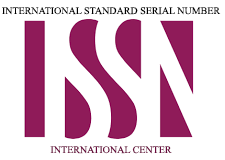-
Psychology
-
Advice
-
Educational Science
Investigating the Relationship between Health Literacy and Health Anxiety in Special Patients Visiting Zahedan SATA Office
Volume 1, Issue 2, 2019, Pages 127 - 133
1- B.Ms Nursing .Zahedan SATA Office.Iran
Abstract :
Anxiety about health is about worrying about protecting against serious illnesses based on misinterpretations of body emotions or changes as a disease. Health anxiety is a new diagnosis in the latest US psychiatric classification that has partially replaced autism. The aim of this study was to determine the relationship between health literacy and health anxiety in specific patients referred to the SATA office in Zahedan.
Material and methods
This study is a cross-sectional (descriptive-analytical) study that was conducted cross-sectionally in 2020. The study population was 92 specific patients referred to SATA Zahedan who entered the study after reviewing the entry and exit criteria. The sampling method in this study was easy and accessible. The data included demographic information, the Health Anxiety Inventory (HAI) designed by Salkousis and Varvik in 2002, which included 18 questions, and the Health Literacy Questionnaire (HELIA), designed in 2014 by Montazeri et al., Which included 33 questions. Has been collected. Data were collected and analyzed using mean descriptive statistics, standard deviation and range of changes and independent T-test inferential tests, and Pearson correlation coefficient in SPSS software version 21.
Results
The results showed that the average age of the clients was 42.26 29 2.29. There were 50 women (54.3%) and 42 men (45.6). The diploma and above the diploma are 54 (58.69%) and 38 (61.96%), respectively. 35 singles (38.04%) and 57 (61.96%) are married. The average score of the health anxiety of the clients is 32.92 09 2.59 and the health literacy score is 63.04%, respectively, 25% is not enough, 8.69% is excellent, 3.26% is excellent. There is an inverse relationship between health literacy and anxiety (p <0.005). There was a relationship between gender and sub-component of the disease (p <0.005). There was also an inverse correlation between age and sub-component. (p <0/005) There was a relationship between education and decision making and behavior (p <0/005). There was no significant relationship between other variables.
Conclusion
The results of the present study showed that 63.04 percent of specific patients had insufficient health literacy. Their anxiety score was moderate. Also, it showed that people with higher health literacy scores have lower health anxiety. The results showed that the average score of the disease in the relationship between health anxiety and gender differences is significant. Women are more likely to be anxious about men than men. Older people also have lower scores on health literacy. People with a bachelor's degree have higher scores on decision-making and behavioral education. According to the results, providing various educational programs using new methods to increase the level of health literacy of the insured can reduce their anxiety. As a result, by reducing this anxiety, the mental health of the insured Improved.
Keywords :


